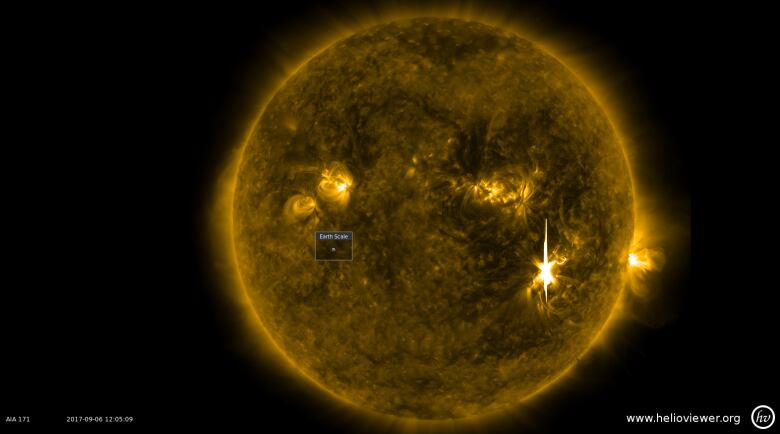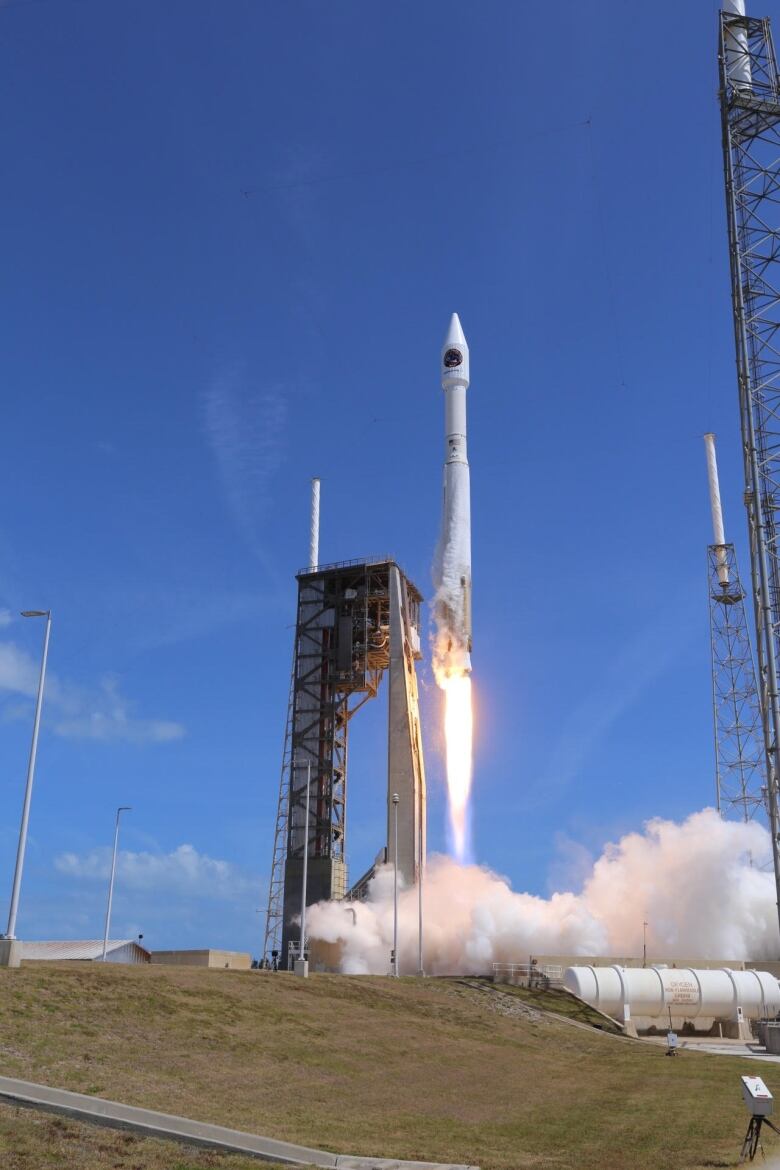Space oddity: U of A satellite survives mission mishaps to capture super solar storm
'Anomalies, we've had a few of them,' says Ex-Alta 1 flight operator

A tinymade-in-Edmontonsatellite began beaming messages back to Earth just in time to capture the most powerful solar flare in more than adecade.
The Ex-Alta 1, designed by a group of students at the University of Alberta, has survived extreme radiation, computer crashes and nail-biting mechanical glitches during its maiden voyage through space.
But when a massive solar flare erupted from the surface of the sun last week, spewing radioactive plasma towards Earth, the satellite was ready to capture datafrom the explosion.
'Quite the scientific punch'
The superpowered "X-Class" flare was the strongest recorded in 12 years, but the cube-shaped satellite was perfectly suited to observe the storm.
"When these big, big clouds of energy-released, charged particles come off the sun, they take about three and a half days to come off the Earth, so you have some fair warning," Tyler Hrynyk, flight operator with Ex-Alta 1, said inan interview with CBC Radio's Edmonton AM.

With a design that allows for high-frequency measurements of the Earth's magnetosphere and thermosphere, the satellite is studying powerful forcessuch as solar flares, which can threaten spacecraft, satellites, and essential electronic networks on Earth.The U of A is then sharing its measurements with research hubs around the globe.
"Despite being that small, itpacks quite the scientific punch,"Hrynyk said.
"It wants to study how solar flares and other charged particles interact with our atmosphere things like the very beautiful natural phenomena like the northern lights or how it can damage ground infrastructure, knocking out electronics and things like that.
"We're trying to study that relationship a little bit more."
Technical difficulties

Another bug plagued the mission in mid-June. The computer system kept going off and on repeatedly, without warning.
Overwhelmed with radiation, the system finally shut itself down, went into reboot, and "saved itself."
Despite the recent turbulence, Hrynyk and his team remainconfident the satellite can stay in orbit until the end of its mission in 2019, when it will slowly fall back toward Earth and lose contact with its creators.
"Anomalies, we've had a few of them, they're unavoidable," Hrynyk said. "Every single space mission is going to have anomalies, because you can't go up there and fix it after you've sent it out.
"But what separates your space mission from others is how you deal with those anomalies and we've dealt with all of them."













_(720p).jpg)


 OFFICIAL HD MUSIC VIDEO.jpg)
.jpg)



























































































